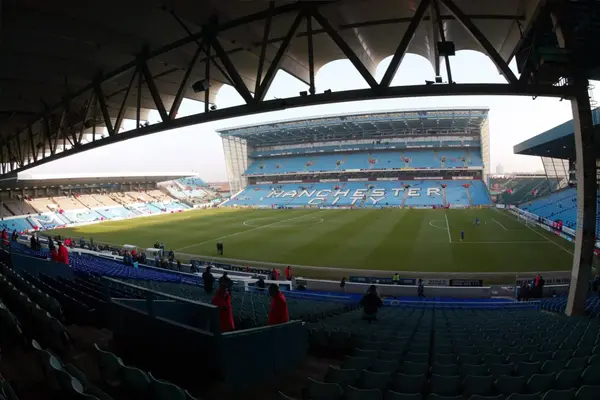Manchester City have made the Etihad Stadium their home for the last 21 years. However, over the course of the club’s long history, they have also occupied other grounds.
Undoubtedly, the Cityzens are most closely associated with their previous stadium, Maine Road, but that is not where Man City’s history began.
In this article, we will look at the three grounds that City have played in, and the highest attendances that have been recorded over the years.
Of course, we will also explain how the club ended up moving to the Etihad – the stadium that the team now call home.
Where did Man City play originally?
The club that eventually became known as Manchester City FC found it difficult to find a permanent home in its fledgling years. It was only when captain Kenneth McKenzie found an area of waste ground on Hyde Road near Ardwick that things began to change.
After leasing the land for £10, a pitch was created in 1887, with the first stand being built a year later. After initially calling themselves Ardwick AFC, they were renamed Manchester City in 1894.
Hyde Road would be the team’s home for the next three decades, increasing to a capacity of 40,000 before a fire in 1920 forced City into moving.
When did Man City move to Maine Road?
The Cityzens moved into their new ground in 1923. It was a controversial choice as most supporters were from Belle Vue while the new ground was situated in Moss Side, which is in the south of Manchester.
It took 300 days of construction and cost £100,000 to build – an eyewatering sum at the time, but City played their first game at Maine Road in front of 58,159 people against Sheffield United on the 25th of August 1923.
Manchester United actually leased the ground between 1945 and 1949, with Old Trafford needing repairs after being bombed during World War Two.
The stadium has undergone many changes over the years. Floodlights were first installed in 1953, and it became an all-seater stadium in 1994, reducing its capacity after the Taylor Report.
The old 18,000-capacity Kippax terrace was replaced by the 14,000 triple-tier Main Stand in 1995 at the cost of £16m, but it soon was clear that further expansion and redevelopment would be too costly.
After the City of Manchester Stadium (now named the Etihad for sponsorship reasons) was built for the 2002 Commonwealth Games, it made sense for the club to move into a brand new ground, once conversion was completed.
The final game at Maine Road took place on the 11th of May 2003 against Southampton, with 34,957 in attendance, just short of the full capacity.
What was the record attendance?
The biggest crowd that City have played in front of at home came all the way back in March 1934.
84,569 fans were in attendance when Manchester City took on Stoke City in the sixth round of the FA Cup. In comparison, the record attendance at the Etihad is 54,693.

